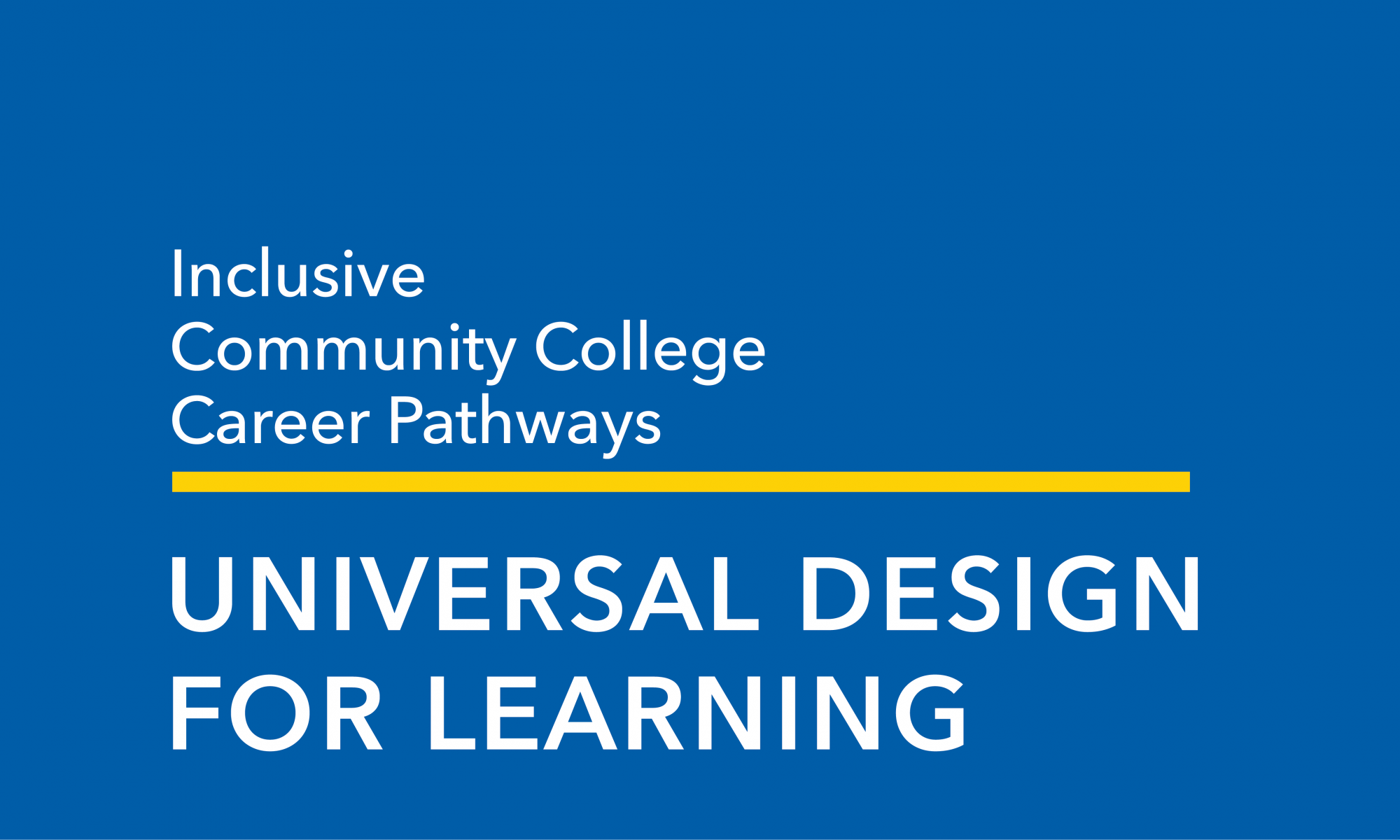This is the third of six installments in the series, “Inclusive Community College Career Pathways.” Our previous blog discusses strategies for increasing the accessibility of community colleges through college preparation programs and campus improvements.
Students learn in a variety of ways. Universal Design for Learning (UDL) is an educational framework that acknowledges and embraces this diversity and “guides the design of learning goals, materials, methods and assessments…with the diversity of learners in mind.” For example, a presentation that includes spoken, written, graphic and hands-on components aligns with UDL principles and allows students with a range of learning styles to engage with the material.
While UDL benefits all learners, it enables students with disabilities in particular to access educational content with fewer challenges, accommodations and supports. As part of their demonstration model grants from the U.S. Department of Labor, Onondaga Community College and Pellissippi State Community College sought to incorporate UDL principles into coursework and services by training faculty and staff on the importance and use of UDL. Several other states have incorporated UDL into educational standards and professional development as well.
UDL Trainings
Both Onondaga and Pellissippi State trained faculty and staff about UDL principles to guide them in designing more accessible instruction and services. Pellissippi State conducted general trainings for a large number of faculty and staff, while Onondaga conducted more in-depth trainings with smaller groups. However, both projects sought to sustain and expand these efforts beyond the trainings alone through follow-up projects and the distribution of UDL resources.
Onondaga’s Approach
Onondaga led a multi-day Universal Design for Learning (UDL) Academy for 49 faculty and staff, which consisted of two phases. During the first phase, faculty and staff learned about the UDL framework, as well as the resources – including accommodations and assistive technology – available to support students with disabilities. They then applied the framework to their own work, either by revising existing lessons and services or creating new ones. During the second phase of the UDL Academy, which spanned across a semester, faculty and staff completed a project to implement UDL principles in their work and made additional commitments to advancing UDL (such as giving UDL presentations to their departments). Finally, Onondaga produced 11 hours of training resources based on its Academy to help other community colleges implement similar trainings.
According to data collected by Onondaga, faculty and staff who participated in the UDL training demonstrated greater knowledge of UDL and were better able to provide examples of how to apply it to their work on campus. Participants also noted they appreciated the opportunity to network with colleagues, share best practices and learn about digital technology. In addition, Onondaga held a two-hour refresher course at the beginning of the COVID-19 pandemic to help faculty apply UDL principles to their remote and hybrid teaching.
Pellissippi State’s Approach
Pellissippi State offered a series of introductory UDL trainings across the college, and over 370 of 1,000 faculty members participated. The trainings included presentations from nationally recognized UDL experts, as well as workshops led by the college’s Disability Services Technology Specialist, on how to create and use accessible materials and technologies. As follow-up, Pellissippi State distributed a guide to participants on developing a range of accessible materials, from Word documents to PowerPoints to web content.
The college also adopted a campus-wide UDL policy, which was designed to improve services to students with disabilities and educate college employees about issues related to students with disabilities. Pellissippi State based its policy upon the Tennessee Board of Regents Accessibility Initiative, and set a goal for the college to “use UDL principles in the development of all of its informational communication” within five years.
Implications for State Policymakers
While few states have focused on implementing UDL at the post-secondary level, several have incorporated UDL principles into various K-12 standards and guidelines:
- The California State University System developed the UDL-Universe (UDL-U) initiative to provide faculty guidance on re-designing courses to align with UDL principles.
- Maryland established a Universal Design for Learning Task Force, which examined the efficacy and feasibility of implementing UDL in Maryland’s educational systems.

